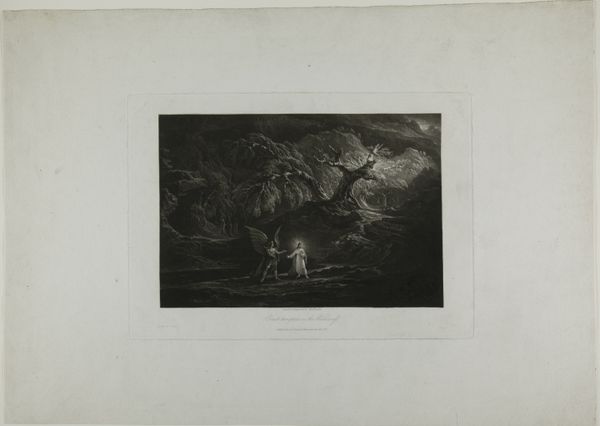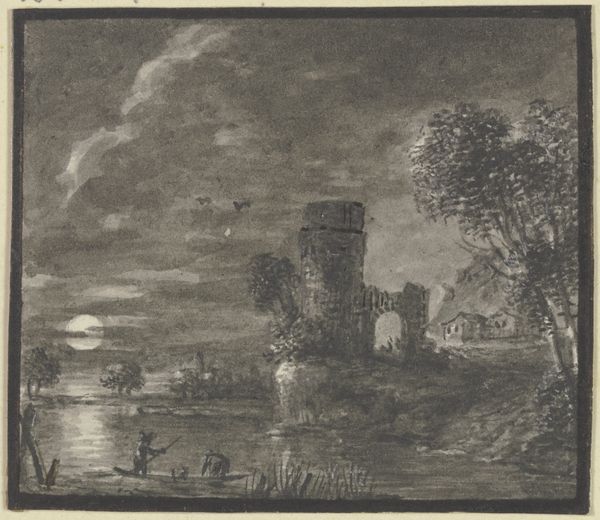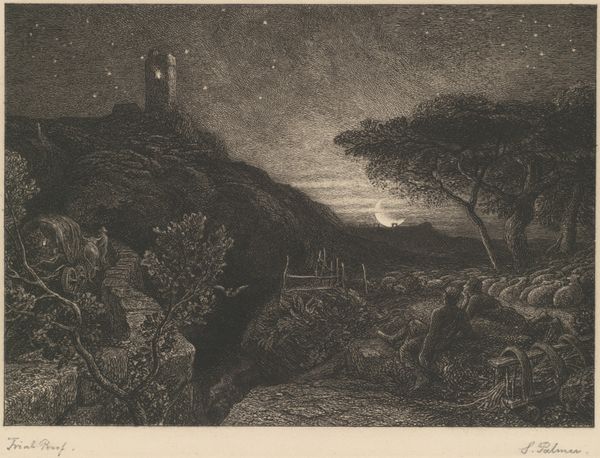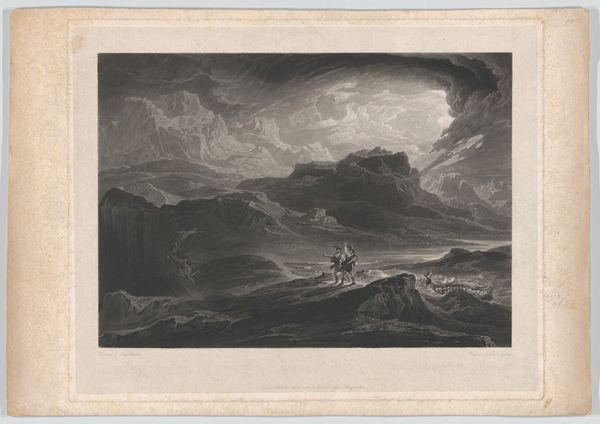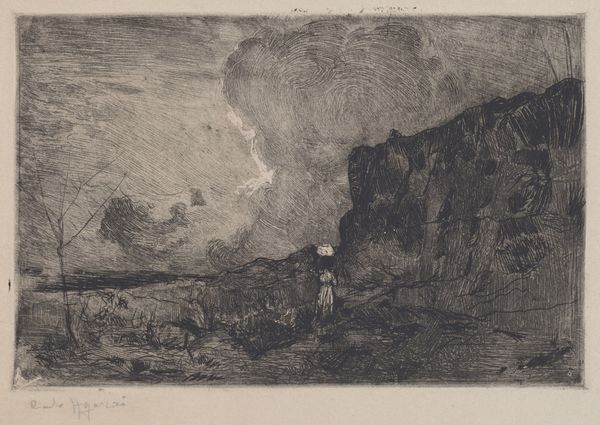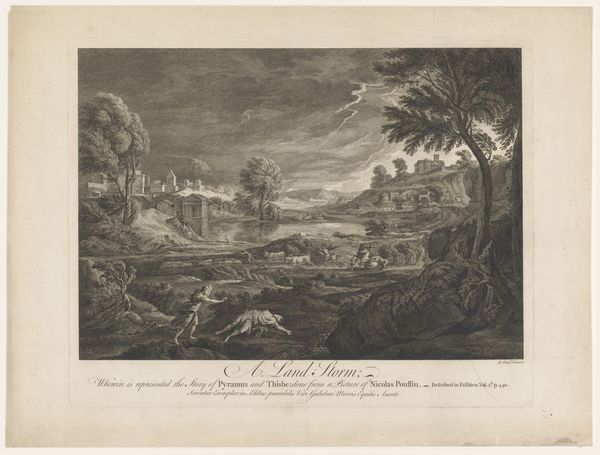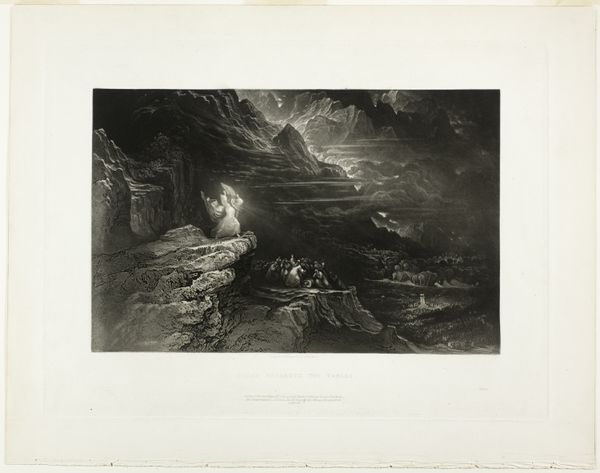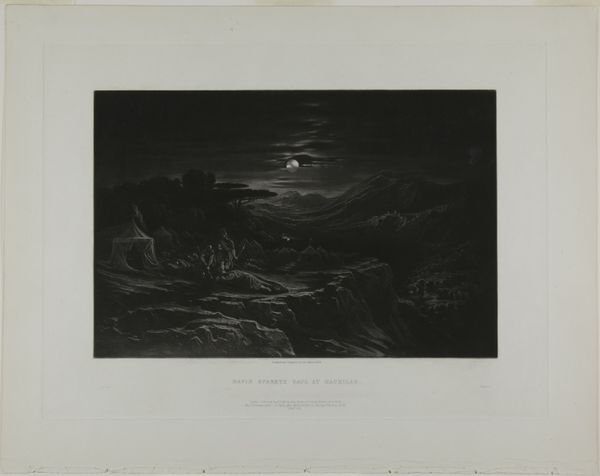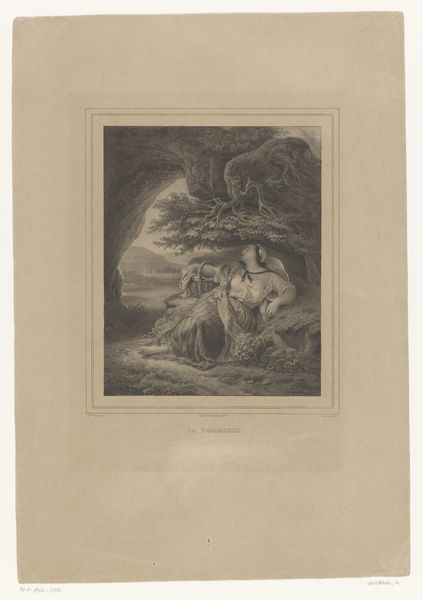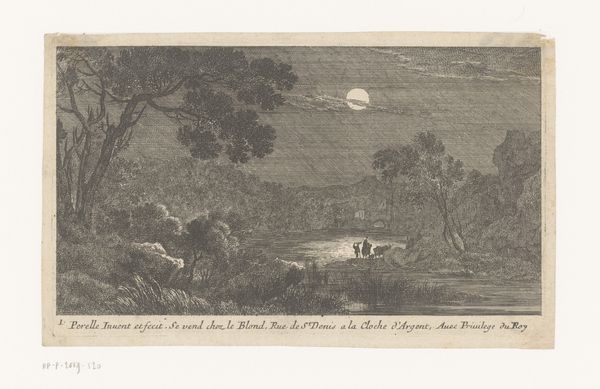
aquatint, print, charcoal
#
aquatint
# print
#
landscape
#
charcoal drawing
#
romanticism
#
charcoal
#
watercolor
Dimensions: 410 mm (height) x 515 mm (width) (bladmaal), 320 mm (height) x 438 mm (width) (billedmaal)
Editor: This is "Flood Landscape in Moonlight" by Heinrich Grosch, from 1797. It’s an aquatint print, and it feels incredibly atmospheric and…well, romantic! I’m struck by the way the moonlight interacts with the landscape, especially on the water. What's your take? Curator: It's interesting to consider this work through its materiality. As an aquatint, a printmaking technique using acid to create tonal effects, Grosch relied heavily on the skilled labor involved in both the etching process and the paper production itself. Think about the social context: Who had access to this print, and how might its production and distribution reflect class structures of the late 18th century? Editor: So you're saying the materials and process are almost as important as the image itself in understanding its significance? How so? Curator: Precisely. The labor involved and the cost of materials would place this within reach of a certain social strata, right? What kind of worldview is privileged when artistic creation and experience relies upon resource extraction, or is designed as a saleable artifact, versus artworks intended for shared community experiences outside a commodity relationship? Do you think this emphasis on craft and technique detracts from its romanticism? Editor: That's a really interesting way to look at it! I guess I hadn’t considered the aquatint process itself as shaping the work’s meaning or limiting it to the wealthy… it does kind of shift my perspective from the purely aesthetic to something more grounded. Curator: Considering these landscapes alongside, say, contemporary ceramics or textiles gives insight to how art history might challenge those distinctions between art and craft through the making itself, democratizing aesthetic valuation of all skill practices. Editor: Thanks, I’ve never really considered this blending art history and economics this way! Now I will never be able to see art without asking how it got made and distributed. Curator: Exactly! The process reveals the connections between art, labor, and social structures.
Comments
No comments
Be the first to comment and join the conversation on the ultimate creative platform.


